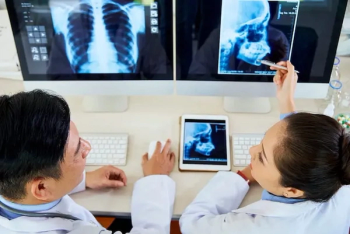
Ultrasound guidance improves outcomes in knee injections
The use of ultrasound needle guidance improves the performance, outcomes, and cost-effectiveness of knee injections in people with osteoarthritis, according to research presented last week at the American College of Rheumatology Annual Scientific Meeting in Atlanta.
The use of ultrasound needle guidance improves the performance, outcomes, and cost-effectiveness of knee injections in people with osteoarthritis, according to research presented last week at the
Researchers wanted to determine if the use of ultrasound guidance would affect the outcomes of intra-articular injections-injections of medicine into, or removal of fluid from, arthritic joints-in people with knee osteoarthritis (OA).
Dr. Wilmer Sibbitt, a professor of rheumatology and neurology at the University of New Mexico Health Sciences Center in Albuquerque, and colleagues studied 94 knees randomly selected for injection administered via either the conventional palpation-guided method or the newer ultrasound-guided method.
When using the ultrasound-guided method, researchers were able to perform the procedure while confirming needle placement. Ultrasound guidance also was useful in guiding administration of lidocaine and the corticosteroid.
Compared with the palpation-guided method, use of the ultrasound-guided method provided improved results, including a 107% increase in the number of people who responded to the treatment and a 51.6% reduction in the number of people who did not, the researchers found.
Additionally, researchers noted a 47% reduction in pain during the procedure, a 41.7% reduction in pain two weeks after the injection, and a 35.5% increase in the length of time the participants experienced pain relief after the injection.
They found the ultrasound method led to a 14.6% reduction ($48) in cost per participant per year and a 58.8% reduction ($593) in the cost per hospital-outpatient participant who responded to the treatment.
“The study demonstrates that when physicians use ultrasound and a technique called hydrodissection performed with precise new mechanical syringes to inject the joint, the patient experiences less pain, improved safety, a better response to medications, and less need for other medical therapy,” Sibbitt said. “Rheumatologists are increasingly using ultrasound, and patients should be aware that joint injections may be more effective and less painful if their physician offers this option to them.”
Newsletter
Stay at the forefront of radiology with the Diagnostic Imaging newsletter, delivering the latest news, clinical insights, and imaging advancements for today’s radiologists.




























